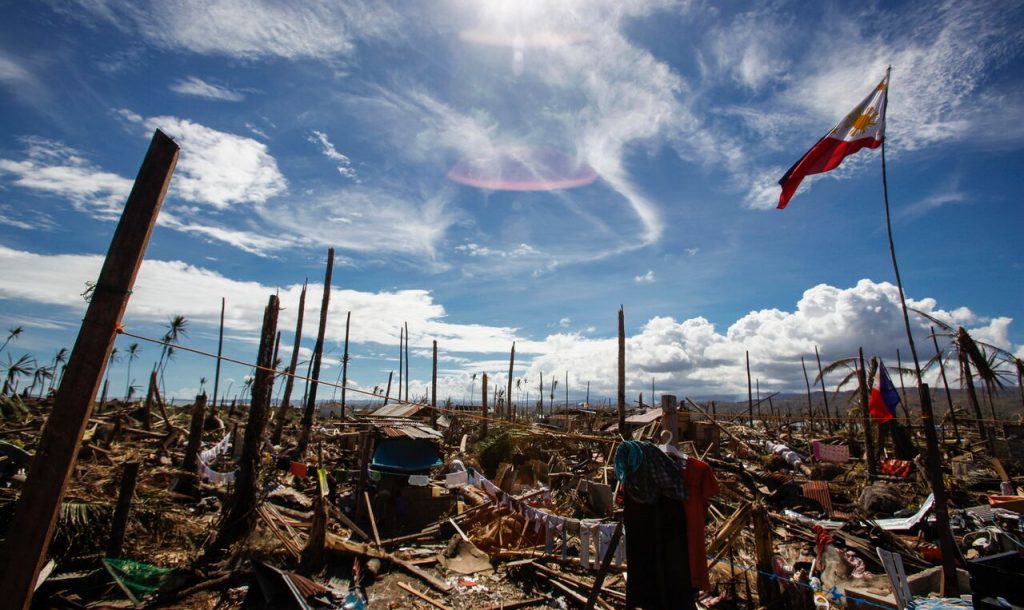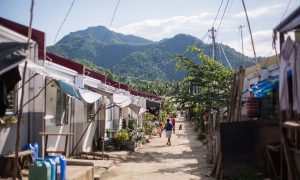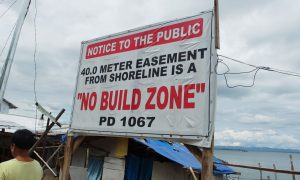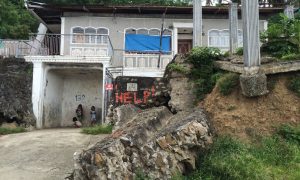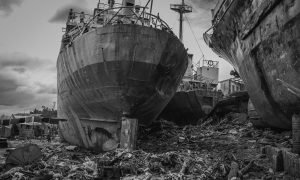Exactly five years ago, Typhoon Haiyan (local name: Yolanda) ravaged some of the poorest provinces of Central Philippines. The strongest storm that made landfall in recent history claimed over 6,000 lives and displaced 4 million people. Many remain missing today.
The story of Haiyan that made the global headlines is a story of resilience—people thriving against all odds.
The Philippines government’s “The Philippines Says Thank You” billboard campaign in cosmopolitan landmarks like New York’s Time Square and London’s Piccadilly Circus showcased positive images of recovery, with fishermen and festival goers thanking the world for their generosity in getting their lives back on track.
In April this year, Tacloban City, the typhoon’s “ground zero”, turned tragedy into triumph by releasing a tourism video that declared Tacloban to be the “home of the happiest people in the world.”
Meanwhile, reports of houses turned over to families relocated away from “hazard-prone areas” to a new township at the northern part of the city have become part of the Duterte administration’s projection of decisive action.
Build back better has been the slogan that holds this narrative together.
But reality is more grime. Today in New Mandala, we present some of the latest research on the challenging topic of post-disaster rehabilitation in the Philippines. Our aim is to give voice to often taken granted perspectives that deserve a fair hearing if the nation were indeed to build back better.
We asked five researchers to share a lesson they learned doing extended field research among disaster-affected communities in Central Philippines. Here’s what they have to say.
Lesson 1: Local aid workers must not be second class citizens
Pamela Combinido, University of Cambridge
Many lessons documented but not learned has become part of the everyday banter among aid workers. For humanitarian agencies, the Philippines is an “ideal laboratory” to introduce digital innovations in disaster response considering high levels of social media use.
Pamela Combinido examines this issue from the perspective of aid workers. Her research finds that “techie aid workers” were treated as second-class citizens in their own country, where key decisions were imposed by international staff rather than co-designed with local aid workers. There is a strong push for the “localisation agenda” in disaster response. And for this to work, Combinido argues that the distorted and distorting relationship between expat and locals must be addressed. [Read here]
Lesson 2: Concrete homes do not feed empty stomachs
Ladylyn Mangada, University of the Philippines-Tacloban
Political scientist and Haiyan survivor Ladylyn Lim Mangada draws attention to the unmet needs of communities resettled away from “hazard-prone areas” to concrete homes in the northern part of Tacloban. Resettlement sites not only lack basic services like water and infrastructure but also opportunities to make a living. Concrete homes do not feed empty stomachs. Post-disaster rehabilitation requires a holistic approach that focuses on the well-being of communities. [Read here]
Lesson 3: Waiting is resource-intensive
Shaye Palagi, University of Colorado-Boulder
Seeing long queues for public transportation seems like a mundane experience for many Filipinos but, as Shaye Palagi tells us, this act of waiting is a clear instantiation of the cost of moving communities to resettlement sites far from their place of work. In this piece, we realise that it is the virtue of patience that keeps social order together, but as to how long people can wait for livelihood opportunities close to home remains an open question. [Read here]
Lesson 4: Recognition is as important as redistribution
Dakila Yee, University of the Philippines-Tacloban
The immediate aftermath of a disaster presents an obvious problem with obvious solutions. People lost material resources, and so they must receive aid that can at least get them going for the next few days. But matters get complicated as time goes by. Redistributing resources—food, shelter, and cash—does not necessarily mean redistributing recognition.
Tacloban-based sociologist Dakila Yee makes this argument in his piece that makes an argument for recognising the voices of disaster survivors when it comes to planning and implementing the build back better agenda. He criticises the process of rehabilitation as one that is often mediated by the state and professional NGOs, at the expense of hearing the demands of the most precarious communities. [Read here]
Lesson 5: Relocation is not resilience
David Garcia
Master planning or planning for the masters? Mapmaker David Garcia exposes the “social algorithm” that has shaped the behaviour of decision-makers that tend to view rehabilitation from a top-down perspective. He proposes a participatory approach to planning, one where people are involved in making and remaking maps of places in which they live.
We hope these five lessons serve as meaningful reminders that building back better is both a goal and a process. To build back better is to treat people better, to better hear their voices, respond to their needs, and uplift their dignity that was once challenged by a tragedy. [Read here]
 Facebook
Facebook  Twitter
Twitter  Soundcloud
Soundcloud  Youtube
Youtube  Rss
Rss 